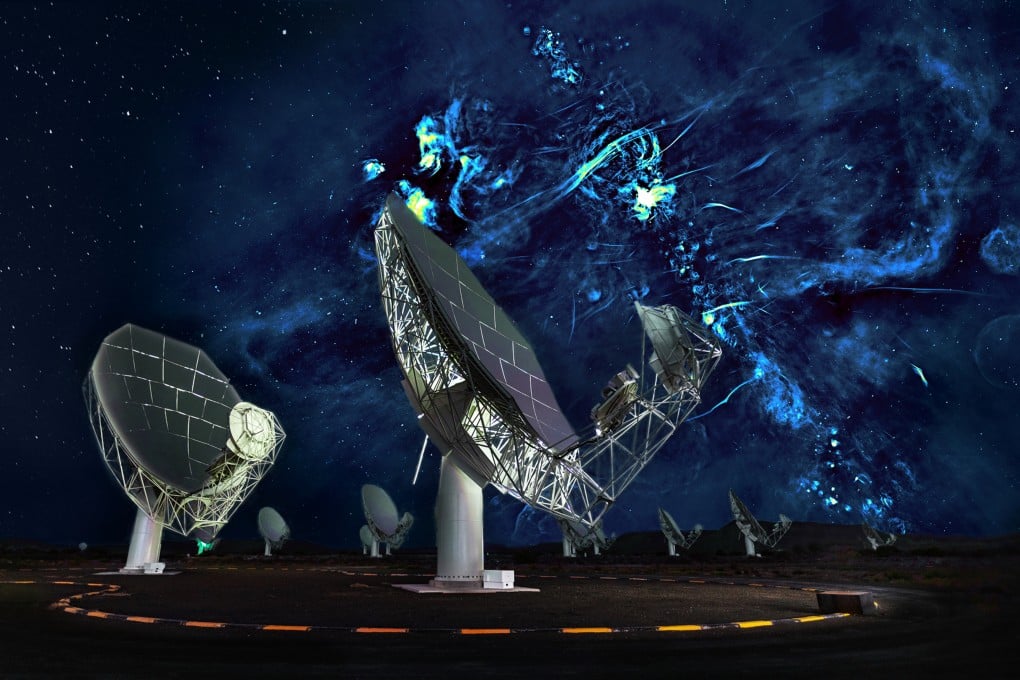Will the largest telescope project on Earth become part of China’s Belt and Road Initiative in the US’ absence?
- As the global Square Kilometre Array Observatory takes shape, Chinese media has called it a ‘landmark belt and road’ project
- But SKAO management and scientists have been quick to correct the claim, saying the telescope network and belt and road are entirely separate

Four 15 metre- (49-feet) wide, 20 metre-tall radio dishes, developed by engineers at the 54th Research Institute of China Electronic Technology Group Cooperation in Shijiazhuang, will be put in place early next year at Meerkat National Park, a core site of the Square Kilometre Array Observatory (SKAO).
With sensitivity 50 times higher than any other radio instrument, and a surveying speed 10,000 times faster, the SKAO will be used to study a wide range of phenomena, from the mysteries of dark matter and dark energy to the search for life beyond Earth and test of Albert Einstein’s general theory of relativity.
“The SKA is a key international scientific research cooperation project of the Belt and Road Initiative,” China Central Television said in a report on August 18.
